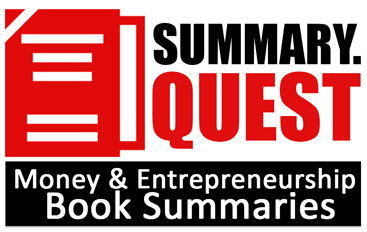Note: Red indicates a key idea not discussed in the YouTube video
In today’s article, we’re delving into the book, “Build, Don’t Talk: Things You Wish You Were Taught in School,” to uncover its key ideas. Here are some of the key Ideas mentioned in the book:
Key Idea No. 1: Education System is a Failure

Our education system is missing something vital – nurturing our amazing gifts of imagination and emotion. We all have our unique ways of taking in information, and there are three main types of learners.
First up, we have the auditory learners. These are the folks who learn best by talking and listening. Then there are the visual learners – these are the ones who learn stuff through seeing and reading. And last but not least, we’ve got the kinesthetic learners. They’re the ones who thrive by diving into things hands-on. The interesting thing is that we all have a bit of kinesthetic learning in us because experiencing is a fundamental way we learn.
However, traditional education focuses on ‘what to learn,’ but it often neglects the crucial ‘how to apply’ aspect. We need to start our educational journey by understanding how we learn best, catering to our unique strengths and preferences.
From the day we are born, we are all unique individuals. We grow up differently, experience the world differently, have distinct talents, and varying ways of perceiving information. Our education should be about discovering what suits us best, not following a one-size-fits-all model.

Our current education system has got some serious flaws. It’s all about cramming info into our brains instead of really thinking about it. And it sorts students into categories based on how they do in certain subjects, totally ignoring what each person is truly good at. We need to embrace each student’s uniqueness and nurture their talents.
In the real world, participation certificates hold no value. Life is competitive; you either win or lose. We must prepare students for this reality.
Similarly, equality doesn’t exist in the real world; it’s a brutal place. Teaching kids this truth would prepare them better. Understanding that the world won’t always be gentle pushes us to work hard and dream big to make the world a better place.
So, instead of chasing after some dreamy ‘fairyland,’ we should build strong, supportive networks with those around us. Schools should foster collaboration, not competition.
Key Idea No. 2: You Suck
In order to grow and improve, we need to face a tough truth – we all have our shortcomings, and denying them won’t help us one bit. It’s time to acknowledge that we have areas where we suck and take a step towards personal growth.
There are two types of people in this world when it comes to facing their inadequacies. Some don’t even try, using their supposed lack of skill as an excuse. Others start something, realize they’re not great at it, but stubbornly cling to it. Both approaches are foolish. Who wants to be both bad at something and foolish at the same time?

The importance of acknowledging our shortcomings cannot be stressed enough. It’s the first step towards personal growth and improvement. When we admit that we’re not good at something, we open the door to new possibilities. So, what can you do to put this concept into action in your life? Here are some actionable steps to consider:
- Self-Assessment: Take some time for self-reflection. Identify areas in your life where you struggle or feel inadequate. This could be in your personal relationships, professional skills, or even hobbies.
- Acceptance: Once you’ve pinpointed these areas, accept them. Understand that it’s perfectly normal to have limitations. Nobody is perfect, and everyone has areas where they can improve.
- Seek Feedback: Don’t hesitate to ask for feedback from others who are more experienced or knowledgeable in those areas. Constructive criticism can provide valuable insights for your growth.
- Education and Training: Consider enrolling in courses, workshops, or seeking professional help. If you’re not making progress on your own, investing in education or professional guidance can be a game-changer.
- Know When to Quit: It’s also important to recognize when something is just not working out. Sometimes, the best course of action is to quit and redirect your energy and focus toward something more promising.
Key Idea No. 3: Discover Your True Calling

In a world where success is often measured by conventional standards, it’s easy to feel the weight of expectations. Many of us can relate to being pressured to follow in the footsteps of family members or peers, aiming for traditional careers like becoming a doctor or engineer. However, the journey to finding your true calling isn’t always a straight path. In fact, it often involves exploring various avenues before discovering your passion and potential.
The pressure to excel in academics can be daunting, especially when you come from a family of overachievers. This pressure can feel overwhelming and can make you question your own abilities. The journey of self-discovery often begins with the recognition that the traditional path might not be your cup of tea.
The journey to discovering your true calling often involves experimenting with various interests and skills. Whether it’s pursuing sports, exploring the world of music, or trying your hand at something entirely different, this exploration is crucial. It’s through these experiences that you gain a deeper understanding of what truly resonates with you.
While trying out different paths, you might face challenges and even criticism from others. It’s important to remember that these hurdles are a part of the journey. Learning to overcome adversity and embracing your unique path can lead to personal growth and self-discovery.
Ultimately, the key takeaway from this journey of self-discovery is to be open to trying as many things as possible. The more you explore, the closer you get to finding your true calling. And remember, it’s perfectly okay not to have it all figured out right away. The journey itself is an invaluable part of the process.
Key Idea No. 4: Don’t Focus on Your Goals
In life, we’re bombarded with questions like, ‘What are your goals? Where do you see yourself in five years?’ Well, I say, let’s not get too hung up on goals. Why, you ask? Simply because obsessing over them can make you lose your sanity and mess up your life.

The first critical shift we need to make is from goal-centric thinking to habit-centric thinking. Goals are essential; they give us direction and purpose. However, they can also become overwhelming if we fixate on them. The key is to break down your larger objectives into daily habits and actions. Instead of obsessing over the end result, focus on the steps you can take today.
Secondly, Overthinking can be a silent killer of progress. It’s like getting stuck in quicksand – the more you struggle and over-analyze, the deeper you sink. When you constantly worry about potential roadblocks or consequences, it can paralyze you. To overcome this, we need to learn to recognize when we’re overthinking and how to break free from this mental trap. If you are interested in learning more about how to stop negative thought and overthinking then click here to read book summary of the game changing book, “Don’t believe everything you think.”
Key Idea No. 5: Stop Innovating, Start Copying

Just take a moment to think about it. Look around you. Everything you see, every idea, every creation, is, in some way, inspired by something that came before. There’s nothing truly original. Everything builds upon what’s already out there. It’s the only way we can thrive in this world.
True innovation often comes from building upon existing ideas and creations. Instead of reinventing the wheel, we can take what’s already out there and add our unique twist to it. This process not only makes us more creative but also more practical.
So, here’s the actionable advice: don’t be afraid to embrace influences from various sources. Whether it’s the work of your role models, ideas from friends and family, or trends in your field, these influences can be your guiding stars.
But the key to success here is not just copying blindly; it’s about combining these influences with your distinct perspective. Think of yourself as an artist, taking pieces of inspiration from multiple sources and crafting your masterpiece.
One crucial point is that there’s no shame in this “copying” process, as long as it’s done with the intent to be inspired and to add a personal touch. It’s not about stealing someone else’s work but rather about learning from it and using it as a stepping stone for your own creativity.
Key Idea No. 6: Be an Achiever, not a Knowledge Hoarder

In a world inundated with information, we often find ourselves drowning in knowledge but struggling to make a meaningful impact. Many of us avidly read books, watch videos, purchase courses, and yet, we fail to translate this wealth of knowledge into action. We’ve become knowledge hoarders, mistakenly assuming that amassing information equates to success – but that’s far from the truth.
To truly grow and succeed, you must become an achiever. Learning is essential, but it should be a stepping stone to practical application. Far too many individuals become trapped in a cycle of continuous learning, never taking the vital next step of action. They may possess immense knowledge but lack achievement. Without showcasing your work, whether through writing, speaking, or any means of sharing your insights, how will anyone recognize your expertise?
Now, I don’t mean everyone should start a YouTube channel, but reflect on your daily activities. Whether you’re an employee, an entrepreneur, or simply living off your parents’ support, if you’re not putting your knowledge into practice regularly, what’s the point? How can you grow and improve? In fact, without applying your learning to real-life situations, others won’t respect your knowledge, regardless of how vast it may be.

The easiest way to get rich is to become the producer of the thing you consume the most.
Ask yourself a simple question: Are you a consumer or a producer? This single query possesses the power to shift your mindset from mere dreaming to tangible achievement.
Key Idea No. 7: Modern Sales Landscape
In the dynamic world of sales, success lies in the art of giving rather than merely gaining. Utilizing the wealth of information available can significantly influence the selling process. There are three pivotal aspects of using information effectively in the sales domain: info disparity, info parity, and info overload.
- Information Disparity: In the past, salespeople held a significant advantage due to information disparity. When our parents or grandparents wanted to purchase a car, salespersons possessed extensive knowledge about the product, enabling them to easily sway potential buyers. This information advantage placed them in a dominant position during negotiations.
- Information Parity: However, as time progressed, information became more accessible to everyone. Buyers gained access to a plethora of information, essentially leveling the playing field. Consumers could conduct extensive research on various brands, models, and prices, eradicating the possibility of sellers employing deceptive tactics.
- Information Overload: Fast forward to today, we live in an era of information overload. The internet has empowered buyers with an abundance of information, often surpassing that of the sellers. A simple Google search provides insights into product reviews, prices, and more. Tricking informed buyers has become a challenging task in this information-packed era.
In this landscape, successful selling necessitates trust. Genuine care for what you’re selling and who you’re selling to forms the foundation of trust. Demonstrate a sincere interest in meeting your customers’ needs, and your credibility will soar.
Similarly, your personal brand is your identity in the market. Establish a strong personal brand that reflects trustworthiness and reliability. Deliver on promises and consistently exceed expectations to reinforce trust.
Key Idea No. 8: How to Sell Effectively
Selling something effectively isn’t just about pushing a product or service onto potential customers. It’s about understanding the buyer’s needs, tapping into their emotions, and creating a sense of urgency. Here is a three-step formula to effectively sell anything:
- Preparation: The foundation of successful selling begins with preparation. Before you approach a potential customer, you need to ask yourself, “Why would someone buy from me?” The answer to this question lies in understanding the buyer’s needs. People make purchases because they have a genuine need or desire. To make a successful sale, you must offer something that sets you apart from the competition.
This unique selling point could be a one-of-a-kind product, specialized knowledge, or a combination of factors that make your offering superior. It’s crucial to be well-prepared with the knowledge of how your product or service fulfills these needs. - Emotion: Emotions play a significant role in the decision-making process, especially when it comes to making purchasing choices. Two powerful emotions that often drive decisions are fear and aspiration.
1) Fear: Fear can be a strong motivator when people are anxious about the future, uncertain about their decisions, or afraid of missing out on opportunities. Effective sellers know how to tap into these fears and highlight the potential consequences of inaction.
2) Aspiration: On the flip side, aspiration motivates people to seek self-improvement, make positive changes, and achieve more in their lives. As a seller, it’s essential to understand the aspirations of your potential buyers and show them how your product or knowledge can help them reach their goals.
To be a top-notch seller, you must go beyond the average and provide a unique solution that resonates with the emotions of the buyer. You can create an aspirational vision, illustrating how your offering can enhance their lives, or you can adopt a more assertive approach by emphasizing the repercussions of not taking action. - Urgency: One of the final pieces of the successful selling puzzle is objection handling. People often procrastinate and delay decisions. This is where creating a sense of urgency becomes crucial. You must make potential buyers understand that the time to act is now.
Incorporating a fear of missing out can be a powerful motivator. For example, in the world of cryptocurrency, companies don’t merely focus on their project or coin’s features; they create urgency by highlighting that the value is increasing rapidly, urging people to join the select few who will benefit.
Key Idea No. 9: How to Get Over Failure

Failure is a universal experience, and often, it’s not the failure itself that people fear; it’s the embarrassment and self-doubt that accompany it. We’ve all asked ourselves at some point, “How do I bounce back from failure?” The truth is, there’s no secret sauce or magic formula. To overcome failure, you need to pick yourself up, dust yourself off, and get back in the game.
If you want to succeed in life, you need to take action. There’s no way around it. Simply asking, “How do I get over failure?” won’t cut it. Action is the only thing that can change your life. Waiting and pondering won’t get you anywhere. So, if you want success, get up and start taking action.
Many people blame their failures on various external factors like lack of money, skills, or competition. However, the real reason often boils down to a lack of skills. If you didn’t succeed, it’s because you didn’t know how to win, make things work, or provide what people wanted. The solution is clear: acquire the necessary skills.
Instead of asking, “How to get over failure?” ask yourself, “Why did I fail?” Taking responsibility for your failures is the first step to improvement. Identify the reasons behind your failure, work on them, and move forward. Whether it’s a lack of preparation, skills, or understanding, address the root causes.

It’s crucial to understand that external factors can slow you down, but they can’t be the ultimate reason for your failure. Blaming circumstances, the government, or external events is counterproductive.
There’s no one-size-fits-all answer to whether you should persist or pivot after multiple failures. Smart people recognize their limitations and adjust their course when necessary. Learn from your past failures and acknowledge the role of preparation in your success.
In the end, your determination and hard work will define your journey from failure to success. Remember, it’s fine to fail, but it’s not okay to dwell on it. Identify the reasons behind your failures, work on them, and move forward with resilience and a commitment to growth. Your past failures will be forgotten once you achieve success.
Key Idea No. 10: Multiple Income Steams

You’ve probably heard that to make serious money and build wealth, you need multiple income streams. Relying on just one isn’t enough to secure your financial future. Here are some income streams mentioned in the book that can boost your financial stability:
- Consultancy: Sharing Your Expertise
Consultancy is an excellent way to leverage your expertise and assist others. Start by identifying a high-demand skill or knowledge area. Then, invest time in learning and mastering it. The goal is to become a recognized authority in your chosen field. This can open doors to consultancy opportunities with businesses seeking your insights. - Public Speaking: Turning Knowledge into Earnings
Public speaking can be a rewarding avenue for generating income. Initially, offer free talks or lectures to build your reputation and credibility. As you gain recognition for your knowledge and speaking skills, transition to paid speaking engagements. Approach educational institutions, conferences, or event organizers to share your insights and get paid for your expertise. - Brand Deals: Monetize Your Online Presence
Growing your online presence can open doors to brand collaborations. As your following increases, companies may approach you to promote their products or services, aligning your expertise with their brand messaging. - Affiliate Marketing: Earn Through Promotion
Affiliate marketing is a way to generate income by promoting products or services through unique affiliate links. You earn a commission when people make purchases through your affiliate links. To succeed in this income stream, build a substantial online following or audience interested in the products or services you’re promoting. - Digital Courses: Monetize Your Knowledge
Monetizing your knowledge can involve creating and selling online courses. Package your expertise into courses and offer them to people eager to learn your subject matter. Individuals who trust your authority in the field will pay for access to your courses, creating a reliable revenue source. - Writing a Book: Share Your Wisdom
Writing a book can establish you as an authoritative figure in your field and provide a new income source. Your knowledge and insights can reach a wider audience through a published book, leading to advances and royalties from book sales. - Business: Create Value
Expanding your income opportunities even further, consider creating a business related to your expertise. You can offer services or solutions to others looking to succeed in the same field. This could involve building a team of professionals to provide comprehensive services to clients, all while earning income through service fees.
“Build, Don’t Talk” takes readers on an incredible journey, showcasing the transformation of a young Indian man who defied ridicule and mockery in school to become a successful entrepreneur, venturing into multiple avenues and building a powerful personal brand. Raj Shamani‘s story is an inspiration to all who aspire to achieve their dreams.

Leave a Reply